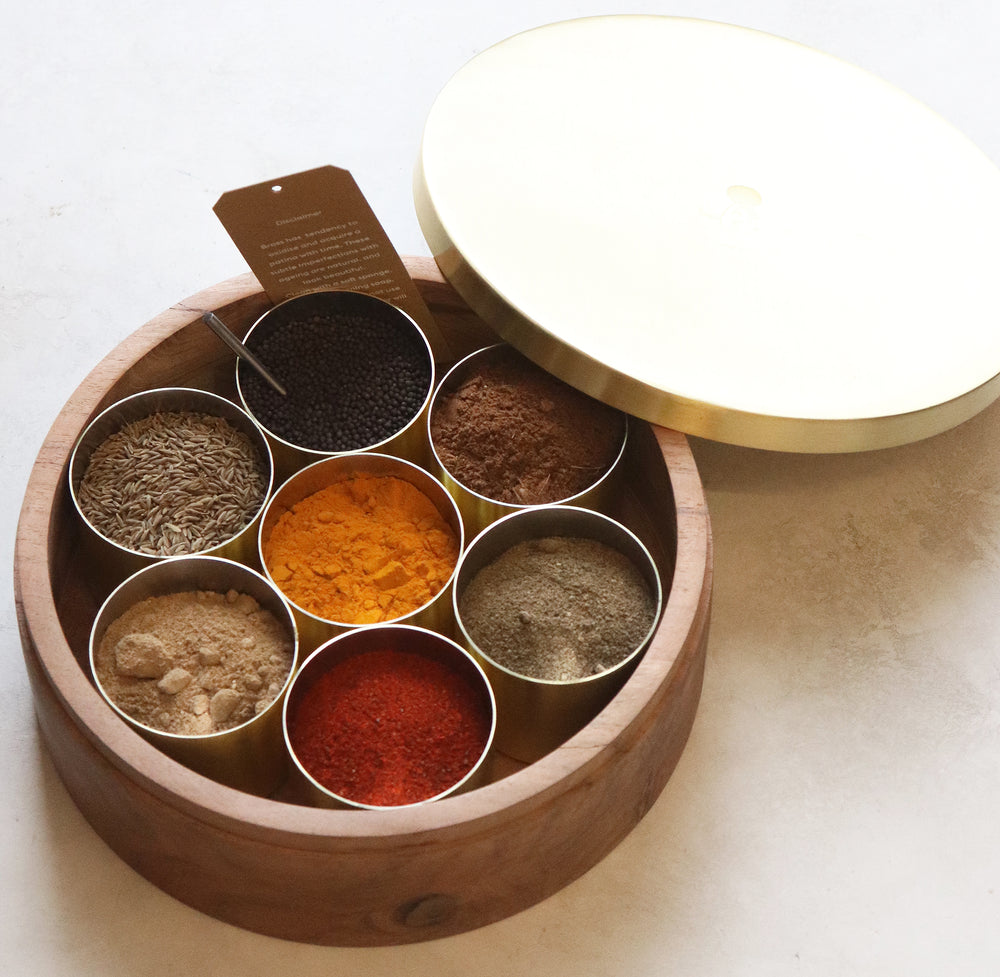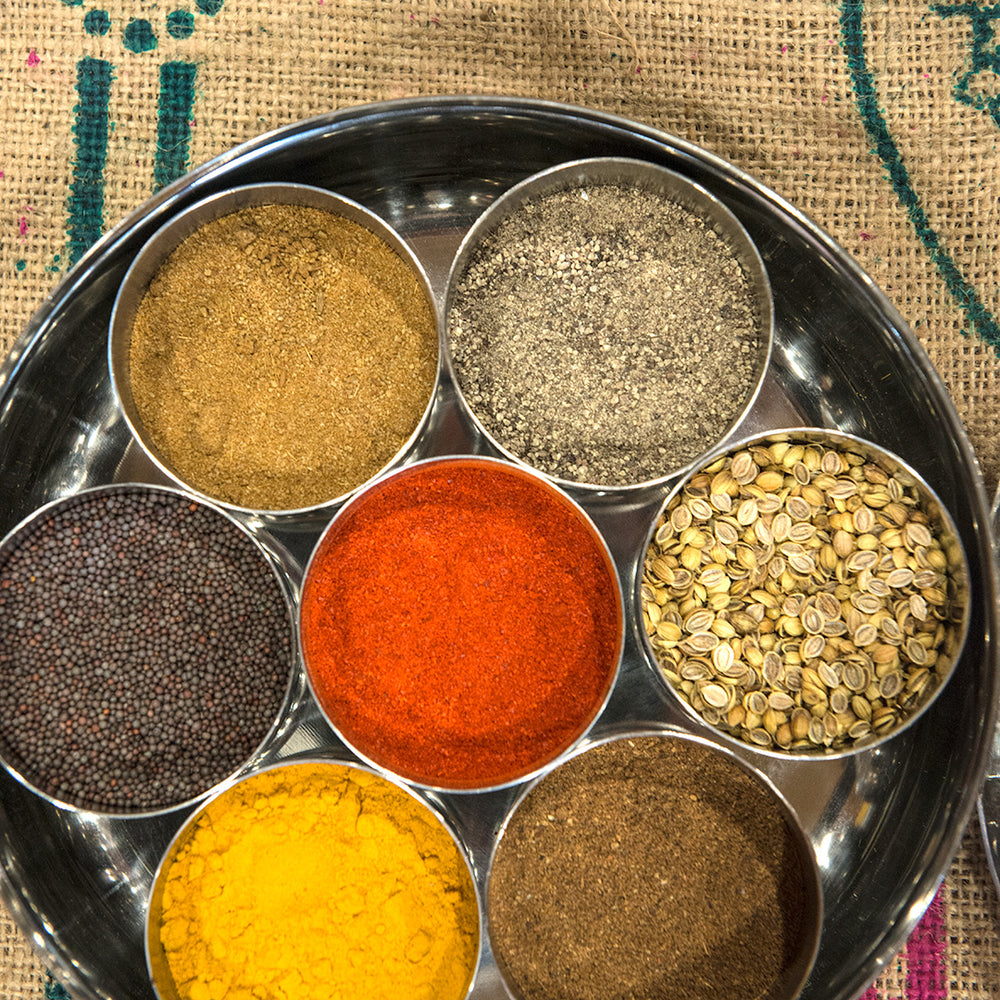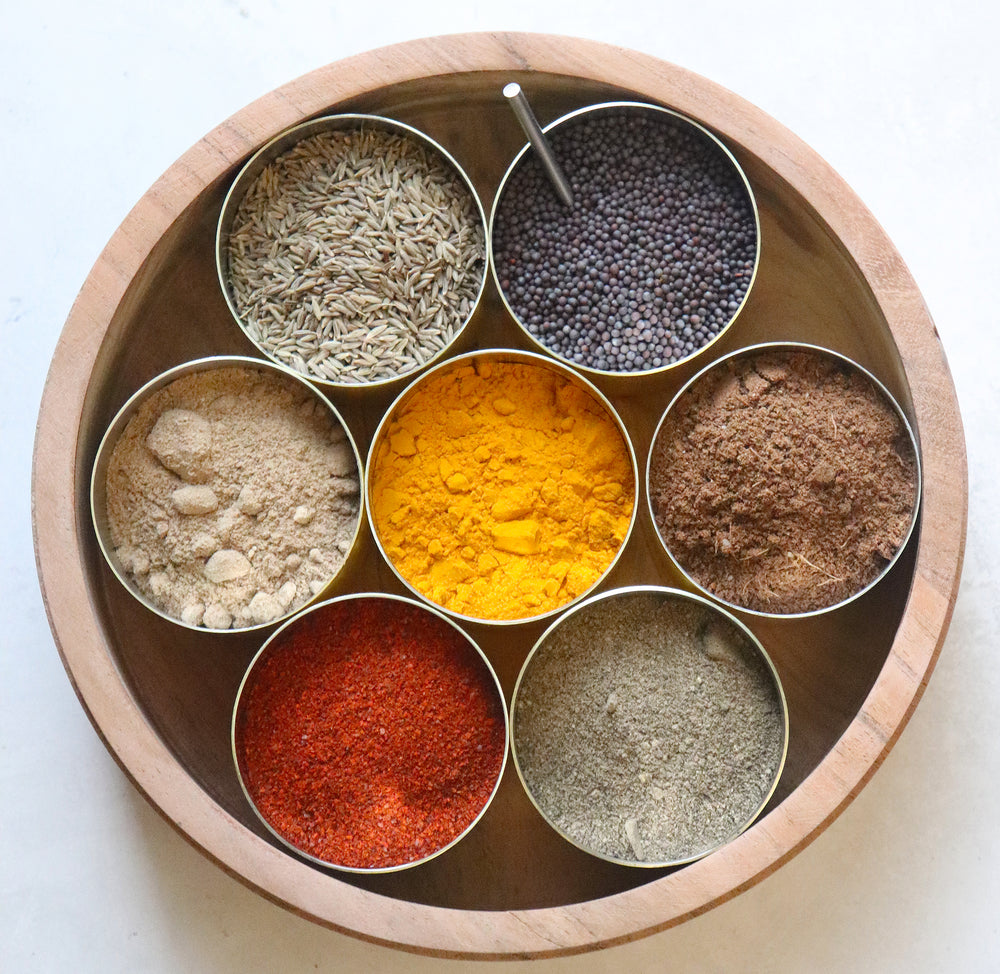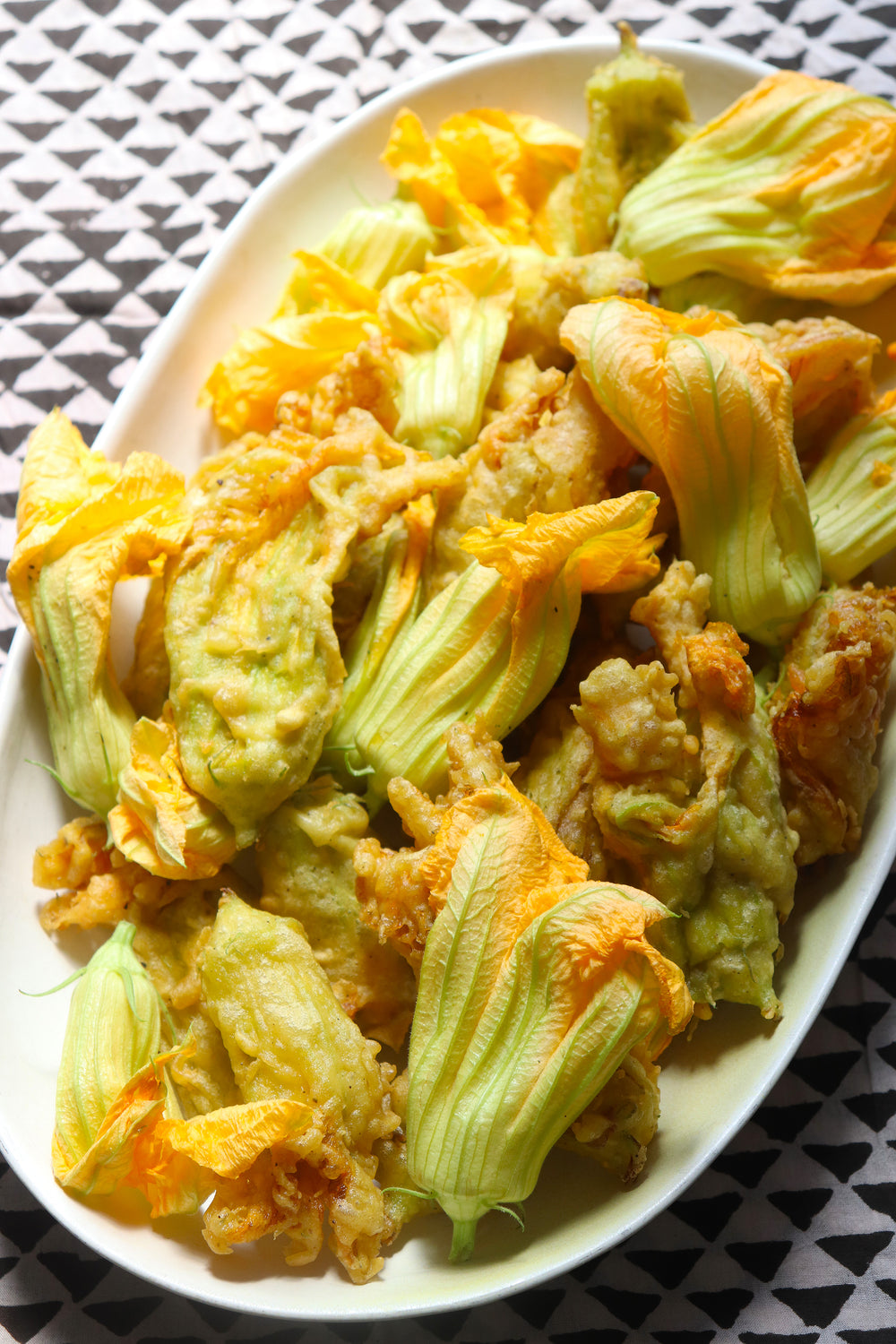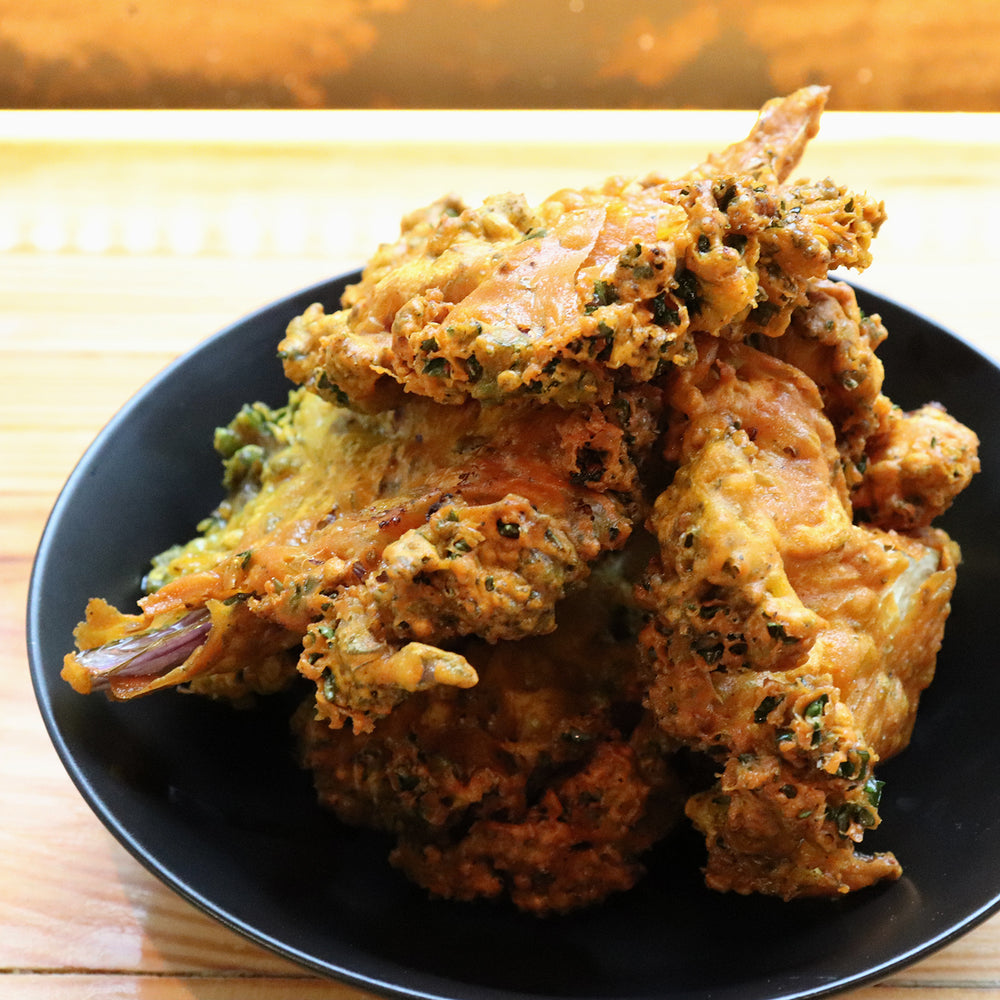
30 Min
GF
V
Holi Pakoras
Holi, a riotous, joy-filled spring festival, is a national holiday in India. It signifies the end of cold, dark winter days, new beginnings and a peek into the arrival of warm, light-filled summers. It’s also the great equalizer_ Indians of all castes, creeds and religions come together on the streets to douse each other in colored powder. Anybody is fair game — if you don’t want color thrown at you, stay indoors!
The days of Holi are, hands down, some of the best memories of my childhood in India. Based on the lunar calendar, festivities begin the day after the full moon, usually in March, when there are neighborhood bonfires with people singing and dancing around them. The bonfire signifies the end of sorrows, grievances and the healing of old wounds. The morning after, street parties begin! My two brothers and I would wake up, put on old throwaway clothes and hit the streets, our pockets overflowing with colored powders. We would stalk the neighborhood, visiting friends and family, throwing powders on everyone and each other, then continue to frolic all day long. My parents, on the other hand, would stay home most of the day and join family or friends for decadent late-night soirees with card games, flowing whiskey, samosas, pakoras and occasional sips of bhang, a popular cannabis-infused elixir.
Unrecognizable, our bodies covered in layers and layers of colored powders and exhausted from the excitement, my brothers and I would end the day eating street foods — pani poori, chaats, biryanis and pakoras — then head home to wash up. Pakoras are delicious vegetable fritters with a deeply flavorful chickpea batter — and though I am not a big proponent of deep-frying at home, some occasions warrant it. You can even make these in a skillet filled with oil, then strain the oil and use it for cooking later.
Holi, a riotous, joy-filled spring festival, is a national holiday in India. It signifies the end of cold, dark winter days, new beginnings and a peek into the arrival of warm, light-filled summers. It’s also the great equalizer_ Indians of all castes, creeds and religions come together on the streets to douse each other in colored powder. Anybody is fair game — if you don’t want color thrown at you, stay indoors!
The days of Holi are, hands down, some of the best memories of my childhood in India. Based on the lunar calendar, festivities begin the day after the full moon, usually in March, when there are neighborhood bonfires with people singing and dancing around them. The bonfire signifies the end of sorrows, grievances and the healing of old wounds. The morning after, street parties begin! My two brothers and I would wake up, put on old throwaway clothes and hit the streets, our pockets overflowing with colored powders. We would stalk the neighborhood, visiting friends and family, throwing powders on everyone and each other, then continue to frolic all day long. My parents, on the other hand, would stay home most of the day and join family or friends for decadent late-night soirees with card games, flowing whiskey, samosas, pakoras and occasional sips of bhang, a popular cannabis-infused elixir.
Unrecognizable, our bodies covered in layers and layers of colored powders and exhausted from the excitement, my brothers and I would end the day eating street foods — pani poori, chaats, biryanis and pakoras — then head home to wash up. Pakoras are delicious vegetable fritters with a deeply flavorful chickpea batter — and though I am not a big proponent of deep-frying at home, some occasions warrant it. You can even make these in a skillet filled with oil, then strain the oil and use it for cooking later.

30 Minutes
4

Notes & Variations
- The beer in the batter makes the pakoras slightly fluffier; alternatively, replace with water or plain yogurt.
- Pakoras can be made with almost any vegetable — try using plain potato, carrots, tomatoes (sliced) or onions. With onions, remember to drain all the liquid to make crispier pakoras.
- Add finely chopped herbs to the batter, such as cilantro or mint.
- Plain yogurt or ketchup makes a nice dipping sauce for pakoras.

Notes & Variations
- The beer in the batter makes the pakoras slightly fluffier; alternatively, replace with water or plain yogurt.
- Pakoras can be made with almost any vegetable — try using plain potato, carrots, tomatoes (sliced) or onions. With onions, remember to drain all the liquid to make crispier pakoras.
- Add finely chopped herbs to the batter, such as cilantro or mint.
- Plain yogurt or ketchup makes a nice dipping sauce for pakoras.
Tags:

Stock Your Pantry
Tags:

Stock Your Pantry
